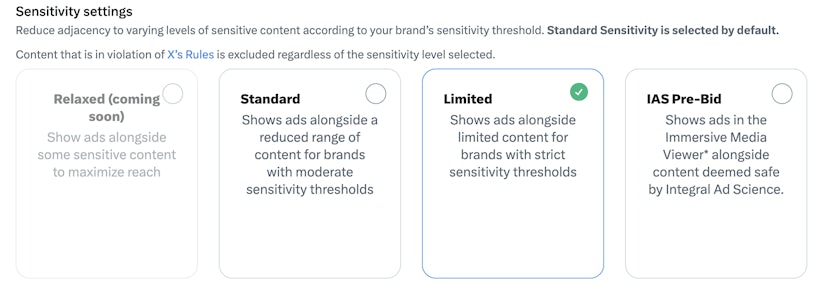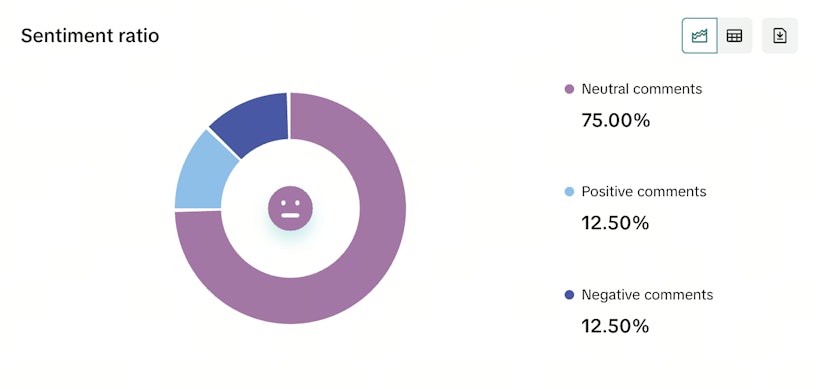Since the Cambridge Analytica scandal in 2016, social media platforms like TikTok, Meta, and X have faced increasing scrutiny from governments worldwide. This culminated in TikTok’s short-lived ban in 2025—raising the question: how can marketers protect brand safety in such an unpredictable landscape?
In the last 5 years alone, we have seen bans, controversy and boycotts become more and more prevalent – not only from consumers but also from government bodies. As of writing, it has been a short time since the TikTok ban in the United States was lifted, with the future of the app still in the air. X, previously known as Twitter has also been mass boycotted, with communities on Reddit banning links from the platform in response to Musk’s fascist salute at the 2025 inauguration of President Donald Trump.
Not all platforms are safe from scrutiny – beyond the Cambridge Analytica scandal, Meta has recently been under fire from the European Union’s antitrust commission, citing that “the company breached EU antitrust rules by distorting competition in the markets for online classified ads. The Commission takes issue with Meta tying its online classified ads service, Facebook Marketplace, to its personal social network, Facebook.”
As marketers, we need to consider what brands we’re associated with. Brands that manufacture and distribute products may make certain decisions about what suppliers they should work with, so why shouldn’t we be more critical about what social media platforms we use to market our brand?
The problem is the reach that these platforms offer. The top 5 social media platforms for 2024 were Facebook, YouTube, Instagram, WhatsApp and TikTok. None of these has been shy of controversy in recent years, but it would be short-sighted to cut these out of any social media strategy, paid or organic. Sometimes it is best to work with the devil you know, especially when it means keeping up with your competitors.
However, despite this instability in the current social media landscape, it isn’t to say that there is nothing we can do as marketers about it. Brand safety is a top priority for ensuring your brand is credible and positive for your customers, and in this blog, we’ll be outlining our recommendations for keeping on top of brand safety and mitigating risk regardless of potential disruption in the social media space.
The social media environment in 2025 – what’s happened so far?
TikTok
On Sunday 19th of January, users in the US faced a short-lived region lock which left advertisers scrambling to respond with no visibility as to when (or if) the U.S. Government would come to an agreement with ByteDance which would reinstate the platform. With over seven million small businesses on the platform in the US and almost $4 billion spent on ads in 2023, marketers are understandably concerned about the implications of an extended TikTok ban in the region.
Meta
Beyond Cambridge Analytics and the European Commission, Meta has also come under fire for sparking calls for a ‘user exodus’ following a series of policy changes announced by CEO Mark Zuckerberg. As a result this would end the platform’s third-party fact-checking system and disbanding its diversity, equity and inclusion team.
X/Twitter
As CEO of X, Elon Musk’s controversially growing involvement with the U.S. Government and recent comments on European politics have resulted in the platform haemorrhaging users over the past few months as people search for alternatives. Dating from the initial Twitter takeover and renaming of the platform to X, many brands had already begun to see the platform as an unjustified risk, pulling spend from X’s advertising service.
With this unprecedented instability among social media titans and thousands of users boycotting staple platforms, it’s more important than ever for marketers to be agile and robustly prepare for the unexpected as part of their 2025 strategy.
How can marketers minimise risk in-platform?
As a first line of defence during periods of heightened sensitivity on social media, we recommend ensuring that in-platform brand safety tools are leveraged to their full scope.
TikTok, Meta and X all provide some control over what kind of content ads can appear against within a user’s feed, on top of a foundation of in-built brand safety measures. Keeping track of these controls and leveraging keyword/topic exclusions to protect brand identity is essential. With brand safety becoming a mounting concern on X, brands looking to leverage the platform should consider reviewing their safety controls (accessible at an ad group level), which offer a range of sensitivity settings as well as keyword and account handle exclusions.

It’s also wise to keep a closer eye on comment engagement across all platforms as social media environments evolve. Meta and TikTok both allow straightforward visibility and keyword filtering of comments, with the latter providing a comprehensive tool facilitating sentiment analysis over time for easy moderation – found under the ‘Analytics’ section of TikTok Ad Manager.

For more sophisticated social listening trends beyond a single platform – investments into tools such as Brandwatch or Sprinklr can help to monitor sentiment and shifts in user behaviour proactively. If used well, these tools can help to shift strategies if brands suddenly need to reach key audiences elsewhere.
Campaign structure is also key to resilience against potential blackouts or delivery issues. High campaign volumes with manual, granular budget allocation can result in wasted or poorly optimised spend under such circumstances. Therefore, building a consolidated campaign structure with minimal campaign volumes and utilising in-platform budget-optimisation tools (offered by all 3 platforms) allows for greater budget versatility, with spend redistributing in the case of a regional outage, or if certain demographics are choosing to leave/join platforms in response to developing news.
Factoring uncertainty into media planning
With an uncertain future for some of the largest social media platforms, marketers must avoid ‘putting all their eggs in one basket’ in terms of media spend, as pushing all resources into one platform, regardless of its efficiency, can lead to downtime in the event of an unexpected blackout.
A diverse, cross-platform strategy built on meticulous media planning is crucial to stable performance. Now, more than ever, it’s important for marketers to build a deep understanding of the full scope of how different platforms deliver results through reliable measurement.
For brands with an established presence across multiple marketing channels, we recommend leveraging Marketing Mix Modelling (MMM), a comprehensive and accurate model which provides invaluable insights into the true impact of your cross-platform activity by harnessing existing data. This then informs how spend should be allocated and weighted between channels based on its impact on performance as a whole. Our blog post on MMM covers this approach in more detail.
For brands looking to expand into new channels, incrementality testing is essential for evaluating performance. By selectively increasing or decreasing spend in test and control segments (i.e. location), this form of testing reveals the incremental impact of marketing activity on overall revenue, building a clearer picture for marketers of the true value of each platform they invest in. If you’d like to know more about how incrementality testing can prove the value of a marketing channel, read our case study here.
Using these methods in tandem builds a comprehensive knowledge of platform activity & effectiveness, and facilitates a ‘Test and Learn’ approach – the best way to stay agile and adaptable during uncertain periods.
Keep in mind the learnings derived from these tests when planning media spend and forecasting results – as you can avoid overcommitting spend where it could be vulnerable. With reliable data to justify budget allocation, contingency planning will be easier, mitigating risk.
It’s also wise to ensure that, as part of diversifying strategy, the process of branching into new platforms is as frictionless as possible to reduce impact on performance, particularly if changes are made in response to unexpected platform outages.
Crucially, creative should be designed to be scalable and suitable for a range of platforms where appropriate, to reduce downtime caused by the design process and avoid losses if circumstances necessitate a sudden pivot.
First-party data is also useful for softening the transition period – a wealth of data based on CRM platforms and customer lists can help mitigate campaign learning periods and connect with a known audience who may be present across multiple platforms.
Turning Evidence into Action
The most infallible paid social marketing strategies embrace the concept of ‘Evidence into Action’, turning continuous experimentation into a foundation of confidence, even when moving into periods of heightened uncertainty.
If you’re feeling daunted by industry instability as we move into 2025, we’re here to support you in building an optimised and agile approach to paid social investment.
At Impression, our experts leverage industry-leading testing and modelling to fully understand the cause and effect of your media investments and inform a bespoke, resilient strategy which can withstand platform downtime.
Talk to one of our team to find out more about how we can help, or check out our other paid social blogs for more actionable insights.





